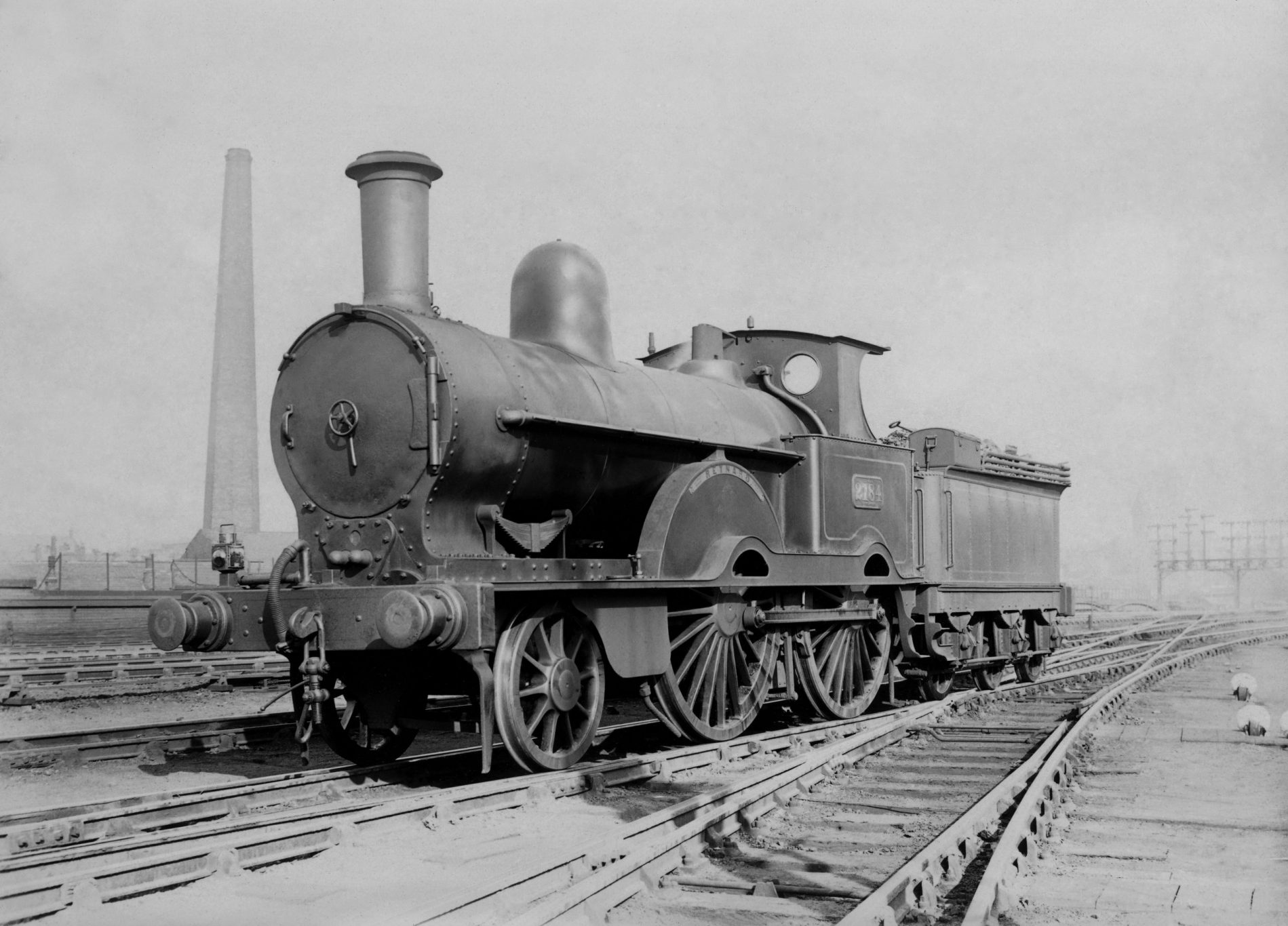The 2-4-0 Tender engines
For many years, the mainstay of the LNWR express engine fleet were a number of classes of 2-4-0 tender locomotives. Listed below are the various classes in order of their introduction
Ramsbottom Samson Class
A class of 90 2-4-0 engines with 6ft 0in driving wheels built for secondary duties under Ramsbottom and Webb from 1863 to 1879. Reputedly the first passenger engines with coupled wheels. It has the usual Ramsbottom features: the fancy chimney top, safety valves, horizontal smoke box door, slotted splashers, no brakes on the engine and no cab. The coupling rods are of the early Ramsbottom type, with forked ends having wedge adjustment and cottered fastenings. 80 replaced by ‘Small Jumbos’ in 1890’s, the others continuing for 20 years in engineer department use.
Ramsbottom Newton Class
A class of 96 2-4-0 express engines with 6ft 6in driving wheels built under Ramsbottom and Webb from 1866 to 1873. They were developed from the ‘DX 0-6-0 Locomotive Class’ 0-6-0 and were intended for express passenger working on the Lancaster & Carlisle where the ‘Problems’ were having difficulties in adverse weather conditions. All were ‘rebuilt’ (actually replaced by) ‘Large Jumbos’ by the early 1890‘s.

Webb Precursor Class
A series of 2-4-0’s built by F.W. Webb from 1874 with 5ft 6in driving wheels thought to be better suited to hill climbing on the Crewe-Carlisle line; whereas the ‘Precedents’ although similar in many other aspects had 6ft 6in wheels. Precursor had the usual Webb features, plain chimney top, a cab, they also had open Ramsbottom safety Valves, horizontal smoke box door, hook-type front coupling and no brakes on the engine. They were all replaced by 2-4-2 5ft 6in tank engines from 1890.
Improved Precedent Class (Large Jumbo)
Known officially as the ‘Improved Precedent’ class, they were developed from John Ramsbottom‘s Newton Class of 1866-73. One of the most famous ‘Jumbos’ was No.790 Hardwicke. During the ‘Races to the North‘ in 1895, it set a record which was to last for almost forty years. Hauling the west coast train from Crewe to Carlisle, it covered the 141 miles of hilly road, including four miles of 1 in 75 Shap Summit, at an average speed of 67¼mph, and achieved speeds over 90 mph. It is now preserved in the National Railway Museum, York England. Even more famous in its day was No.955 Charles Dickens. This engine worked the 8.30am express from Manchester to London Euston and the 4pm return for twenty years and so covered more than 2 million miles, a record that has never been broken by any other steam engine.
Whitworth or Waterloo Class (Small Jumbo)
Ramsbottom’s Samson class engines were replaced in the 1890s by engines which were outwardly of similar appearance to the ‘Improved Precedents’ or ‘Jumbos’ which had been introduced by Webb in 1887. The replaced Samsons had smaller 6ft driving wheels and were thus colloquially known as the ‘Small Jumbos’. Small Jumbos were also sometimes known as ‘Whitworth’ or ‘Waterloo’ class, after early members of the class.






